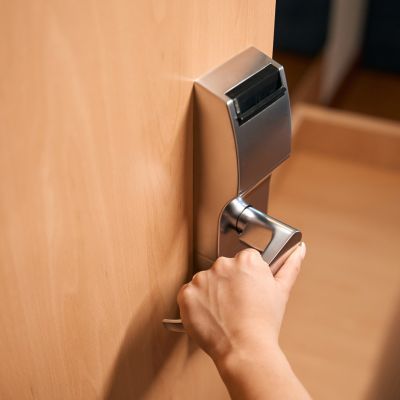You already know the customer is the king.
Simply put, the customer must be at the core of all strategies to keep your business afloat.
Like any other industry, the hospitality industry can benefit from effective restaurant marketing strategies that deliver results.
But do you know how to market a restaurant?
To help you navigate, we have put together an up-to-date list of 34 restaurant marketing ideas.
What is a Restaurant Marketing Strategy?
A restaurant marketing strategy refers to reaching, attracting, and engaging customers across multiple channels, increasing online and offline visibility in the market, and generating revenue.
For example, these restaurant marketing strategies include driving traffic to the website, special promotions, menu optimization, and digital engagement.
Restaurants experiencing a lot of upheavals can ensure continued success through a good marketing strategy.
Marketers in hospitality must focus on crafting dynamic marketing strategies that work best according to restaurant format and size.
Your restaurant can drive growth despite the fierce competition by remaining relevant with the right marketing strategy around industry dynamics and consumer preferences.
Why is a Restaurant Marketing Strategy Important?
According to Statista, the global hospitality market reached nearly US$4.7 trillion in 2023 and is expected to grow to US$5.8 trillion by 2027.
Each year, hundreds of new restaurants are added to the hospitality industry worldwide, increasing competition for acquiring market share.
By adopting the best marketing for restaurants, you can cook up success.
Consistent marketing efforts are essential to drive your business forward. So, whether you’re opening a new restaurant or you’ve got a chain of restaurants in your name, here’s why you need a solid marketing strategy:
- Communicate your value proposition
- Grow revenue by attracting new customers
- Increase customer lifetime value by retaining customers
- Increase brand awareness and reputation
- Help you build connections within your local community
- Drive opportunities in partnerships and collaborations
- Attracts new staff members
As restaurant technology evolves and customer preferences change, you must try new marketing strategies and find out what does and doesn’t work for your restaurant, target market, and location.
Restaurant Marketing Strategies and Ideas
As dynamic trends in the hospitality industry emerge, restaurants need to formulate well-crafted marketing strategies to convince customers to choose them over competitors.
Let’s continue to explore the list of the 34 best restaurant marketing strategies below.
1. Create your Restaurant’s Website
As a result of digitalization, the global restaurant industry has transformed. A robust digital presence matters the most in today’s digitally native world.
Most people research on the internet before going out to eat. At a bare minimum, you need a single-page website that provides all the information about your restaurant, such as about us, menu, and contact page. Ideally, your restaurant website should have a review page, photo gallery, social media platform links, and FAQ page.
Here’s how you can create your restaurant’s website:
- Choose a domain
- Pick a platform and hosting
- Create a website design
- Design your digital menu
- Set up online ordering
- Establish your online presence
Most importantly, keep the content on your website up-to-date, such as menu, location, contact information, and even promotional offers.
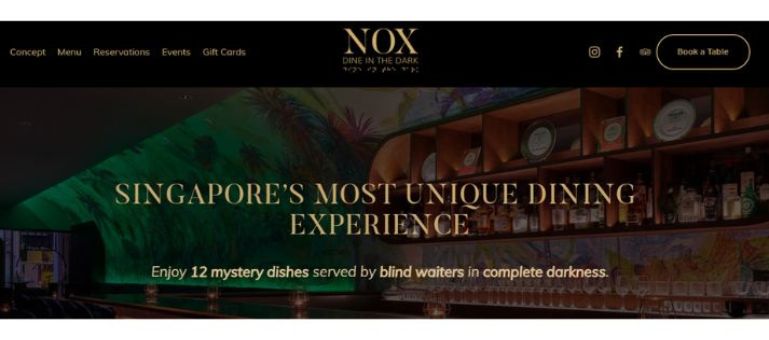
Source: NOX
For example, as we review the website of NOX, a top-class restaurant based in Singapore, we can find all the relevant information a customer requires and even an option to book a table online.
Also, the website design explains the intriguing new world of mystery and sensation that the restaurant aims to convey to the website visitors.
2. Set up a Google Business Profile
According to a study conducted by Statista, hotels have an average of 150 images each on Google, and the restaurants ranked second with an average of 67 photos per Google My Business listing.
Google Business Profile allows restaurants to improve their online visibility and attract new customers by creating a profile on Google Search and Maps at no charge.
By optimizing accurate and up-to-date information, including your hours of operation, location, and menu in your Google Business Profile, you can increase the chances of appearing in search results at the top when customers look for restaurants in a particular area.
Consider these tips to optimize your Google Business Profile:
- Added images and a logo
- Contact and location details
- Button to direct online ordering
- Links to the website
- CTA for reservation
- Recently published posts
Besides being listed on Google Search and Maps, Google Business Profile allows customers to post reviews and feedback online.
For example, suppose we search for KOMA, an upscale Japanese restaurant in Singapore. In that case, it has a Google Business Profile, which shows all the relevant information on Google Search and Map, but a CTA to reserve a table.
3. Invest In Local SEO
Local restaurant marketing through local SEO is a powerful tool.
It is a fact that people looking for information about local restaurants rely on the Internet, primarily through search engines. Increasing website visibility with local SEO can improve organic traffic through customer searches in nearby locations.
Here’s why you must invest in local SEO:
- Increase traffic to your website
- Better conversion rates
- Less advertising costs
- Gain more local reviews
Local SEO can boost your restaurant business by getting attention from relevant audiences, optimizing the website with relevant keywords, and increasing search rankings.
Local results on search engines are based on the following:
- Relevance
- Distance
- Prominence
4. Run Paid Ads
Running paid ads across platforms like Google, Facebook, Instagram, Snapchat, TikTok, and YouTube can significantly boost your restaurant marketing campaign.
Benefits of running paid ads across multiple platforms:
- Reach a specific audience based on demographics, interests, and behaviors
- Boost your restaurant’s online presence
- Set budgets to manage ad spending
- Utilize eye-catching visuals and videos for higher engagement
- Tap into mobile users, especially on platforms like Instagram and Snapchat
- Advertise to users in proximity to your restaurant
- Display ads at peak times for better conversion rates
- Generate immediate traffic and potential customers
By running a paid ad on Google, you can expect high ROI (Return on Investment) as it is a highly targeted and cost-effective marketing channel.
According to the data published by Statista, Google generated 224.5 billion U.S. dollars in advertising revenue, and the figure is expected to grow further to reach nearly 340 billion U.S. dollars by 2027.
With roughly three billion monthly active users, Facebook ads are a great way to reach new customers and grow your restaurant business.
Facebook ads target users based on their demographics, location, and profile information. You can set a budget and bid for each click or impression that your ad will receive.
With 1.35 billion monthly active users of Meta’s Instagram, these ads have a higher conversion rate. Instagram ads appear in users’ feeds, stories, and pages in the same format as organic content from other Instagram accounts.
According to a global survey in 2023, 66 percent of responding marketers stated they would increase their usage of Instagram in the near future; 43 percent said they would increase the usage of TikTok advertising.
5. Build Your Social Media Presence
A solid social media presence helps you build and promote your restaurant tribe. It lets you showcase your menu, engage with customers, share mouthwatering visuals, and build a loyal online community.
Here’s why you should build your social media presence:
- Reach the targeted audience entirely for free
- Drive engagement through interactive posts
- Increase one-on-one communication with customers
- Build loyalty through brand credibility
- Gain user-generated content on social media
- Improve your presence among local communities
- Direct potential customers to your website
Social media provides a platform to promote specials, gather feedback, and stay top-of-mind, ultimately driving more diners through the door and boosting revenue.
6. Starting Your Blog
Have you ever thought about why blogs matter?
The answer is simple: Blogs help you improve the social presence of your restaurant and help customers reach you in a way they usually can’t with traditional marketing.
But why is blogging still so relevant in a world where customer attention span is reducing sharply?
Because they want to:
- Find answers to their questions
- Learn new information
- Decide if they should make a purchase or not
- Connect with a community
- Get advice from an expert or someone they trust
Blogs are the epitome of free marketing that boosts engagement, establishes an online presence, and encourages interaction.
For example, The Garden Cafe, located in the heart of Woodstock, New York, beneath the mystical shadow of Overlook Mountain, has an aesthetically pleasing website design and also an exclusive blog section in which the owner of the Cafe shares recipes, insights, and everything related to their cafe theme.
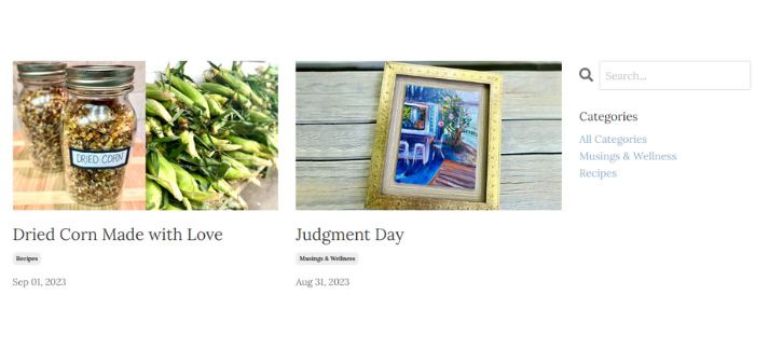
Source: The Garden Cafe
But how do you start your blog? Consider these tips:
- Choose a blogging platform
- Find the right niche
- Add a blog section to your website
- Set up and design your blog
- Brainstorm blog topics
- Create an editorial calendar
- Analyze data to understand what users are reading
With minimal expense and effort, blogs can help you up your marketing game in the hospitality industry.
7. Send Email Newsletter
Email newsletters are a great way to keep your customers informed and updated about the latest offerings, chefs, menus, and events.
Newsletters directly reach your customers in their inboxes and provide them with exclusive content that can’t be found elsewhere.
Here is a list of things your restaurant newsletter can cover:
- Weekly specials
- Chef’s recommendations
- New menu items
- Customer stories
- Culinary events
- Staff spotlights
- Cooking tips
- Exclusive promotions
- Sustainability efforts
- Recipe highlights
For example, this top-class restaurant in Singapore, Zen, has embedded a newsletter sign-up form where customers can enter their email address to receive newsletters periodically. It is a great tactic to gather customer data and market their products and services.

Source: Zen
8. Create Listings on the Major Directories
Supercharge your marketing efforts by creating local and international listings on the major directories.
Creating online listings on significant directories is essential for restaurants to increase online visibility, reach a wider audience, and enhance their credibility.
It improves search engine rankings, fosters trust among potential customers, and provides accurate information about the business’s location, contact details, and services, ultimately driving more traffic and leads.
9. Ask Customers to Add Reviews
It’s no secret that competition nowadays is intense. Reviews are among the best ways to increase your credibility and reputation among the target audience.
Don’t you want a 5* review of your restaurant?
We’ve got you a list of ways that can help you encourage customers to share their feedback by asking them for reviews online.
Here’s how to ask customers for reviews:
- Send a follow-up email
- Provide a QR code on receipts
- Include a review request on your website
- Ask during checkout
- Send SMS reminders
Alternatively, you can offer discounts and incentives to motivate customers to leave a review.
10. Upload Videos to YouTube
YouTube has taken the world by storm. YouTube restaurant marketing strategy can be an intimidating tool for brands.
Businesses are unlocking success with YouTube, as YouTube’s worldwide advertising revenues amounted to 6.69 billion U.S. dollars in 2023.
Therefore, as a restaurant owner, you must consider YouTube marketing an effective way to reach a large audience, targeting specific demographics and engaging with potential customers.
Follow these tips to create your YouTube marketing strategy:
- Create a YouTube channel
- Research your competitors
- Create relevant content
- Optimize your videos
- Upload and schedule your videos
- Utilize YouTube ads
- Analyze and adapt
11. Send Birthday Discount Emails
Imagine it’s your birthday
You roll over the bed to check text messages, and there is a message that says, hey, get a 20 percent discount at our cafe today because it’s time to celebrate your birthday.
Now, how do you feel? Excited? Special? Happy? That is the point of sending birthday greetings discount emails, as they have higher chances of conversion.
Here’s how to create birthday email campaigns that convert:
- Collect customer birth dates
- Use discounts and offers
- Format your email like a birthday card or ecard
- Personalize your subject line and body copy
- Automate your birthday emails
Remember, if you are not sending birthday emails, you’re leaving a lot of revenue on the table and missing an opportunity to build brand loyalty.
12. Use Online Reservation Platforms
Online reservation platforms are not only designed to improve restaurant operations but also to support your marketing efforts.
You can use push notifications on online reservation platforms as reminders for exclusive discounts, new menu items, and services, along with a call-to-action “Reserve a Table” button to improve the rate of your online bookings.
For example, Oleana Restaurant, which celebrates the cuisine of Turkey and the Middle East, has an online reservation system allowing you to book in advance.

Source: Oleana Restaurant
13. Integrate an Online Food Delivery System
According to the Statista Research Department, the number of users in the online food delivery market has increased drastically since the pandemic, and the online food delivery segment is set to achieve the highest value of 2.5 million users by 2027.
Here are some benefits of integrating online food delivery systems into your restaurant business in the marketing context.
- Reach: Access to a broader customer base beyond the local area
- Convenience: Customers can order food from anywhere at any time
- Data Insights: Access to customer preferences and ordering trends
- Competitive advantage: Staying competitive in the modern food industry
- Operational efficiency: Streamlined order management and reduced errors
- Adaptation: Meeting the demand for digital and contactless options
Amp up your marketing efforts by partnering with online food delivery companies. Some customers can even discover you for the first time through such platforms.
Today, customers prefer the speed and convenience of online food delivery apps. These apps deliver 1000s of customers to restaurants every month, creating a huge win-win situation.
14. Make Partnerships with Other Local Businesses
Partnerships and collaborations with local businesses can help you get some much-needed perspective to elevate your brand and continue serving customers.
Here are some unique partnership marketing ideas for restaurants:
- Host a themed cooking class with a local chef
- Collaborate with a local brewery for beer and food pairings
- Create a joint loyalty program
- Host a charity event together to support a cause
- Partner with a food blogger or influencer for reviews
You don’t necessarily have to partner with businesses in the restaurant industry but rather businesses that complement your product or service. You can leverage each other’s strengths, reach new audiences, and create value for your customers.
15. Introduce Loyalty Programs
Loyal customers are the best diners. But why? Because they promote positive word-of-mouth and are likelier to try new menu items.
Customer loyalty programs track the spending of repeat customers and then reward that loyalty with points that can be exchanged for rewards to keep them returning.
Here are some tips to build a successful restaurant loyalty program:
- Reward customers with loyalty on every visit
- Reward customers on their special days, such as birthdays
- Reward customers for purchasing an item a certain number of times
- Reward customers reaching certain membership milestones in a subscription model
- Reward customers for in-venue, online delivery, and pick-up orders
Loyalty programs are far less costly as compared to the ROI it delivers. Attracting customers who already know and love your restaurant is more effortless than attracting new customers.
16. Monitor your Online Reputation
Maintaining your online reputation is crucial to restaurant marketing in today’s digital world. Customer reviews, social media presence, and online listing add credibility to your restaurant business and influence diners’ choices.
Most importantly, keep the content consistent across channels to maintain brand consistency. Conversely, negative online feedback and controversies can damage brand perception and trust.
Therefore, as part of your reputation management, you must:
- Keep reviewing Google reviews of your restaurant
- Respond to negative reviews in a positive way
- Engage with customers on social media
- Address customer complaints
- Monitor hashtags and mentions
Remember, there are countless platforms where customers can review and provide feedback about restaurants, even if your business isn’t listed.
17. Use Coupon and Discount Campaigns
Coupons and discounts – who doesn’t love them?
Coupons and discounts help restaurants attract new customers, assist in selling new products, entice customers to purchase, and foster loyalty.
But you can only reach the endpoint with a definite goal for coupon and discount campaigns.
Search, list, and narrow down the purpose of coupons and discounts for your business, such as boosting conversion, increasing sales, reducing abandoned carts, clearing stock, and attracting new customers.
Advanced tips for coupon and discount campaigns:
- You must know your profit margins when choosing the percentage to offer
- Discount items to move stock that would otherwise go to waste
- Pay attention to your words, focus on getting a gain
- Targeting loyal customers means you can decrease customer acquisition costs
For example, Doughmain posted a discount on their Instagram handle, and the visual says buy 1 boxed donut and get 1 at 50% off. This strategy will help boost sales because the higher amount of money off is more appealing to customers.

Source: Doughmain
18. Promote a Special Menu for Holidays
For restaurants, holidays are a busy time, providing a fantastic opportunity to market your business. You can attract customers by creating special restaurant holiday promotions to unwind over delicious food and drink items.
Here’s how you can promote a special holiday menu at your restaurant:
- Create eye-catching graphics and banners
- Develop a festive-themed menu layout
- Use holiday-specific colors and imagery
- Craft compelling social media posts
- Offer limited-time discounts or promotions
- Send out email newsletters
- Collaborate with local influencers
- Advertise on relevant websites
- Distribute flyers and posters
- Host holiday-themed events or tastings
Try serving a spin on classic holiday dishes according to the theme of your establishment and holiday event to get creative. You can diversify your entree offerings by adding dishes that add to the celebration on holiday.
19. Use Podcast
As an extra serving, a podcast is a powerful tool for restaurant marketing.
Creating a podcast showcasing your culinary expertise, sharing behind-the-scenes stories, highlighting special menu items, discussing food trends, and featuring guest appearances from food enthusiasts or local influencers can build a loyal following.
Consistent podcasting can also improve your online presence, driving more website and social media traffic. By connecting with food-loving audiences, podcasts can amplify your restaurant’s reach and leave a lasting impression.
20. Run SMS Marketing
To boost marketing and sales, restaurants can integrate text alerts, SMS ordering, and pickup and delivery messaging.
Also, restaurant SMS marketing is less expensive than most other forms of promotions and is a highly effective way of surprising your customers with unique offers and discounts
Restaurant marketing tips for sending SMS to customers:
- Personalize messages
- Send at appropriate times
- Provide value
- Keep messages concise
- Include a clear call to action
- Respect opt-out requests
Undoubtedly, technology has changed how we communicate, but SMS marketing is still relevant due to its high open and response rate. SMS marketing offers personalization like no other channel.
Therefore, even in this digital age, SMS marketing is a wave that has rippling effects as it pulls the momentum.
21. Showcase Your Limited-Time Offers
Using discounts is an old marketing tactic. But limited-time offers give it a breath of fresh air. Driving urgency in your marketing is all about setting a specific deadline to take action.
Ready to create your limited-time offer?
Here are 7 limited-time offer best practices you can implement for your restaurant business:
- Don’t overuse limited-time offers
- Be clear on expiration dates
- Lean on holiday calendar dates
- Tease the upcoming offer ahead of time
- Try to stand out with your copy
- Drive urgency with countdown timers
- Showcase limited availability of food item
Limited-time offers boost restaurant ROI by creating urgency, increasing customer visits, and driving sales. They generate excitement, attract new patrons, and enhance overall profitability.
For example, a leading grill and bar restaurant chain in the U.S., Applebee’s, posted a limited-time offer for all-you-can-eat on their Instagram handle to capture the attention of existing and new customers while enticing them to dine in before the offer expires.

Source: Applebee’s
22. Survey Your Customers Regularly
Surveying your customers regularly will provide valuable insights into customer preferences, allowing restaurants to tailor their menus, services, and experiences to meet their patrons’ evolving needs and tastes.
Here are some of the critical ways to conduct customer surveys:
- Online surveys
- Comment cards
- Email surveys
- Social media polls
- In-person survey
- Mobile apps
When diners feel their opinion matters, they are more likely to return and spread positive word-of-mouth about your restaurant.
23. Start a Food Truck
Adding a food truck to a restaurant’s marketing strategy can be brilliant. Many businesses in the hospitality industry are now opening food trucks as a supplement to their existing restaurants.
Here’s how a food truck restaurant can improve your business:
- Reach new customers
- Offer full-service catering
- Promote a signature dish
- Introduce the chef on-board to customers
- Offset the slow season
- Cross-promote your brand
Adding a food truck into your marketing mix can expand a restaurant’s reach, engage with a diverse customer base, and boost brand recognition and revenue.
24. Regularly Upload Foodie Photos
Take a brief scroll through your social media, and you’ll likely spot a food photo. And when it comes to food, first impression is everything.
Visually appealing photos with aesthetically pleasing presentations can significantly impact your customers. The power of visuals shouldn’t be underestimated.
Here’s how food photos can assist with your marketing:
- Photos give you a chance to show off some of your bestselling items
- Put your food photos on third-party websites where customers search for food
- Add studio-quality food photos to your Google Business Profile
- Start using photo-heavy social media platforms like Instagram
- Show off your ingredients, mainly if they are locally sourced
On the other hand, high-quality food photography can make even the most straightforward dish look mouth-watering. And poor food photography can make even the most delicious dishes look unappetizing.
For example, SYIP, a minimalist lifestyle concept cafe serving all-day brunch and specialty coffee, regularly uploads food photos from its cafe on its Instagram handle.
25. Show Your Staff
In today’s digital age, connecting with your audience is paramount. With ‘Meet Our Staff,’ restaurants can boost their marketing efforts dynamically by showcasing their dedicated team behind the scenes.
Amplify your chef prowess online on social media and offline in trade expos and workshops.
Diners look for chefs of your restaurant as big names draw customers in unprecedented numbers. It helps you engage, inspire, and build trust with your customers. Chef branding also establishes a reputation and builds credibility in the industry.
For example, Godiva, the most popular luxury Belgian chocolate maker, has showcased its top chefs and culinary experts on its website.
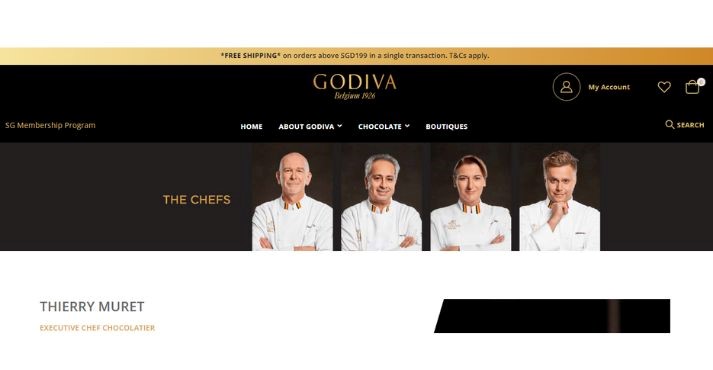
Source: Godiva
26. Host Events and Theme Nights

Hosting events and theme nights can significantly boost your restaurant’s appeal, help you market your restaurant, and attract new customers.
Special events create excitement and provide unique experiences that differentiate your restaurant from others. These events can draw in diverse crowds and encourage repeat visits, leading to a more loyal customer base.
Consider organizing:
- Trivia nights: Engage customers with fun and challenging trivia questions.
- Karaoke sessions: Create a lively atmosphere where guests can sing their favorite songs.
- Live music performances: Feature local bands or solo artists to entertain diners.
Popular themes include:
- Mexican Fiesta Night: Offer a menu with tacos, margaritas, and traditional Mexican music. For example, El Tiempo Cantina in Houston, TX, regularly hosts such events featuring authentic Mexican cuisine and live mariachi bands.
- Italian Wine Tasting: Pair different wines with Italian appetizers and main courses. Eataly in New York City often hosts wine-tasting events, providing guests with a variety of Italian wines and delicious pairings.
- 80’s Retro Party: Decorate your restaurant with 80s memorabilia and play classic hits from the decade. Joe’s Pub in New York City occasionally holds themed nights, including retro parties transporting guests back to the 80s with music and decor.
Your website, social media, and email newsletters can promote each theme. For example, a sushi restaurant might host a “Sake and Sushi Pairing Night,” offering guests a guided tasting of various sakes paired with their sushi menu.
This approach is an effective restaurant marketing strategy, leveraging unique experiences to attract and retain customers. Regularly hosting events and theme nights can also create buzz around your restaurant, increasing word-of-mouth referrals and enhancing customer loyalty.
Benefits:
- Increased foot traffic: Events attract new customers and keep regulars coming back.
- Enhanced customer loyalty: Unique experiences make your restaurant memorable.
- Word-of-mouth marketing: Satisfied customers will likely share their experiences with friends and family.
27. Offer Catering Services
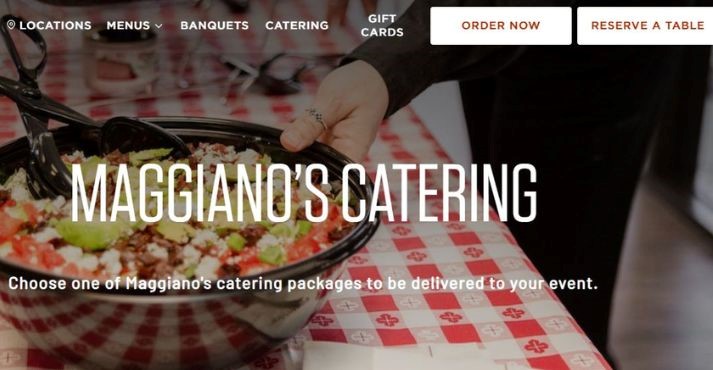
Offering catering services can expand your restaurant’s reach and provide additional revenue streams. Catering allows you to serve larger groups at events such as weddings, corporate functions, and parties, showcasing your menu to potential new customers.
This is a strategic restaurant marketing idea that increases revenue and enhances your restaurant’s visibility and reputation in the community.
To market your catering services effectively:
- Create a dedicated catering page: Detail your catering menu, services, and pricing on your website.
- Promote through social media: Share photos and testimonials from successful catering events on social media.
- Email newsletters: Inform your customers about your catering services and special offers.
- In-house signage: Display information about your catering services in your restaurant.
For example, Maggiano’s Little Italy offers catering for corporate luncheons, weddings, and other events, featuring popular dishes like lasagna, salads, and desserts. By providing excellent service and high-quality food, Maggiano’s secures repeat business and positive referrals.
Benefits:
- Expanded customer base: Reach people who may still need to visit your restaurant.
- Increased revenue: Catering can provide a substantial additional income stream.
- Brand visibility: Catering events help promote your restaurant to a broader audience.
Offering catering is a strategic restaurant marketing idea that increases revenue and enhances your restaurant’s visibility and reputation in the community.
28. Implement a Customer Referral Program

A customer referral program can be a powerful tool for attracting new customers to your restaurant. Referral programs incentivize existing customers to refer friends and family to your restaurant for rewards such as discounts, free items, or special offers.
For example, you could offer a 10% discount to the referrer and the referred customer on their next visit. This strategy leverages word-of-mouth marketing, one of the most effective forms of restaurant advertising.
To implement a referral program, promote it through your website, social media channels, and in-house signage.
Provide referral cards or unique codes that customers can share to make it easy for them to refer others. This approach can lead to a steady stream of new customers and is one of the best restaurant advertising ideas for organically growing your business.
For instance, Carousel Buffet in Singapore offers a referral program where customers who refer a friend receive discounts on their next meal. This encourages existing customers to bring new diners to experience Carousel’s extensive buffet spread, expanding their customer base through satisfied patrons’ recommendations.
29. Create a Mobile App
Creating a mobile app for your restaurant can significantly increase customer engagement and streamline ordering. A mobile app allows customers to browse your menu, place orders for delivery or pickup, make reservations and receive exclusive offers directly on their smartphones.

For instance, The Coffee Bean & Tea Leaf in Singapore has developed an app that enables customers to order their favorite drinks ahead of time and collect loyalty points with each purchase. This not only improves customer convenience but also encourages repeat business.
Promote your app through your website, social media, and in-store materials. Highlight the app’s benefits, such as special discounts or loyalty rewards. Developing a mobile app is a modern restaurant marketing strategy that can boost customer satisfaction and drive sales.
30. Leverage Influencer Marketing
F&B influencer marketing involves partnering with individuals with a large social media following to promote your restaurant. These influencers can share their dining experiences, recommend your dishes, and create engaging content that reaches a broader audience.
To find the right influencers, look for local food bloggers, Instagram personalities, or YouTube creators whose audience aligns with your target market. Offer them a complimentary meal or a unique experience in exchange for a review or social media post.
For example, KOMA Singapore has successfully leveraged influencer marketing by inviting local food influencer @sethlui to dine at their restaurant and share his experience. This collaboration has significantly increased the restaurant’s visibility and attracted new customers through engaging social media posts and reviews.
This can significantly increase your restaurant’s visibility and attract new customers. Leveraging influencer marketing is one effective restaurant marketing strategy that utilizes trusted voices to enhance your brand’s credibility and reach.
31. Offer Seasonal and Local Specials
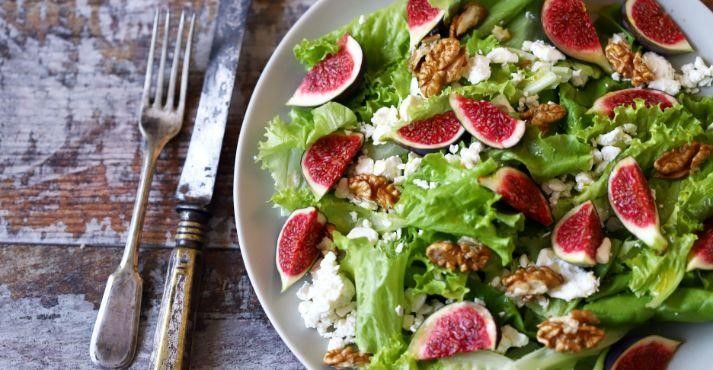
Offering seasonal and locally sourced menu items can make your restaurant stand out and appeal to customers who value freshness and sustainability. Seasonal specials showcase ingredients that are at their peak, providing the best flavor and quality.
For example, in the summer, you can feature dishes with fresh, local produce like tomatoes, corn, and berries. In the fall, add ingredients like pumpkins, apples, and root vegetables.
- Highlight seasonal ingredients: Create menus that change with the seasons, using fresh ingredients at their peak.
- Support local farmers: Source ingredients from local farms and suppliers to ensure the highest quality and to support the local economy.
- Promote sustainability: Emphasize the environmental benefits of using locally sourced ingredients, appealing to eco-conscious diners.
Promote these specials through your website, social media, and in-house menus to attract foodies interested in unique and fresh dining experiences.
For example, Open Farm Community in Singapore offers a “Harvest Menu” that partners with nearby farms to provide the freshest ingredients available. Their commitment to sustainability and local sourcing not only supports the local economy but also attracts customers who appreciate high-quality, seasonal dishes.
32. Host Community Events
Participating in or hosting community events can significantly boost your restaurant’s visibility and reputation. This restaurant marketing strategy in the form of community events provides an opportunity to engage with residents, build relationships, and give back to the community.
Examples of community events include sponsoring local sports teams, participating in charity fundraisers, or hosting a booth at local fairs and festivals.
- Sponsorships: Sponsor local sports teams or community events to increase your restaurant’s visibility.
- Charity events: Host fundraisers or charity events to support local causes and enhance your reputation.
- Interactive activities: Organize events like cooking classes or tasting sessions to engage the community.
For instance, Tiong Bahru Bakery in Singapore regularly hosts community events such as their popular “Cupcake Decorating Day,” where families can come in and decorate cupcakes together. This not only attracts customers but also creates a fun, memorable experience that encourages repeat visits.
Promote these events through social media, local newspapers, and community bulletin boards to maximize participation and exposure.
33. Optimize Your Menu for Online Orders
As more customers turn to online ordering, optimizing your menu for a seamless digital experience is crucial.
Start by ensuring your online menu is easy to navigate, visually appealing, and mobile-friendly. Use clear categories and high-quality images to help customers quickly find what they want.
- User-friendly layout: Organize your menu with clear categories and sections.
- High-quality images: Include attractive photos of your dishes to entice customers.
- Detailed descriptions: Provide thorough descriptions of each item to help customers make informed choices.
Highlight popular dishes and specials at the top of the menu and include detailed descriptions to entice customers. Offering customizable options and transparent pricing can also improve the ordering experience.
For instance, Peperoni Pizzeria in Singapore allows customers to build their pizza by selecting their preferred crust, sauce, and toppings, with real-time updates on the total cost.
This customization enhances the ordering experience and appeals to customers who appreciate having control over their meal choices. Customization and allowing it is one of the top restaurant marketing tips.
To enhance the user experience, incorporate user-friendly features like search functionality, filters, and easy navigation.
An optimized online menu improves customer satisfaction and boosts sales and efficiency. This approach is a crucial restaurant marketing idea that aligns with modern dining trends and customer expectations.
34. Invest in High-Quality Photography
Investing in high-quality photography is essential for creating appealing menus and effective marketing materials. Professional photos can showcase your dishes in the best light, making them look more appetizing and enticing to potential customers.
- Professional look: High-quality photos give your restaurant a professional appearance, enhancing your brand image.
- Increased engagement: Attractive images are more likely to be shared on social media, increasing your reach and visibility.
- Improved sales: Customers are more likely to order a dish that looks delicious and well-presented in photos.
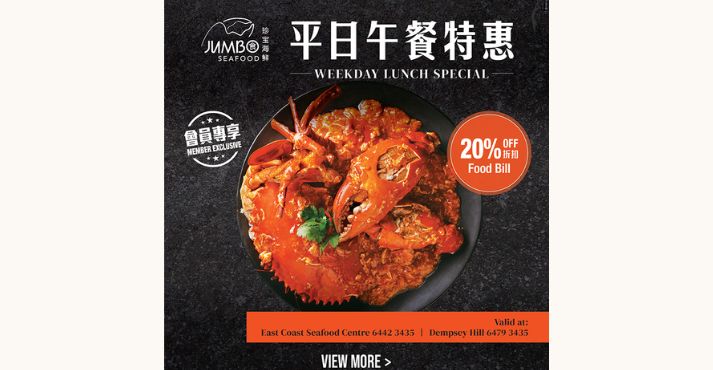
For instance, Jumbo Seafood in Singapore hired a professional photographer to capture stunning images of their signature seafood dishes, such as their famous chili crab. These images are used on the restaurant’s website, social media, and printed menus to attract more customers.
Investing in professional photography is a crucial restaurant marketing strategy that can significantly impact your restaurant’s appeal and success.
Conclusion
Whether you’re an expert restaurateur or a budding entrepreneur, these restaurant marketing ideas are designed to empower you in an ever-evolving industry. Effective restaurant marketing strategies are the key to success as they deliver your goals.
From embracing the power of online reviews and social media to optimizing your website for mobile users or leveraging newsletter emails to local SEO, the right strategies can significantly enhance your reach, engage, and boost sales.
Stay ahead of the competition and make your mark by implementing these 34 best tried-and-tested restaurant marketing strategies to increase visibility, drive engagement, and boost profitability.

